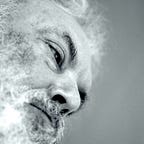Serious Creativity
Edward de Bono
©2015 Peter Fritz Walter. Some rights reserved.
Creative Commons Attribution 4.0 International License.
Using the Power of Lateral Thinking to Create New Ideas, New York: Penguin, 1992, reprinted 1996.
In Serious Creativity, Edward de Bono continues the line of thought previously exhibited in The Use of Lateral Thinking and The Mechanism of Mind.However, Serious Creativity is a more elaborated study of lateral thinking in its broadest and most practical dimensions.
The book consists of three major parts. In Part One, de Bono writes about the need for creative thinking and shows its theoretical and practical applications. The author leaves no doubt that his approach is not destined for artists and creators, but primarily for business people. Thus, not artistic creativity or inspirational creativity is the main field of application of de Bono’s approach to creativity, but creativity used for developing new and profitable ideas for marketing products and for succeeding in the business world.
Accordingly, the style and the language of the book are ideally suited for entrepreneurs and executives, and it provides what the author calls take-away value.Interestingly, and unlike the two predecessors, lateral thinking is now only one element among others within the ten sub-chapters that throw different lights on the important question for every innovative company: how can we find and develop new and successful ideas?
Part Two is a detailed and highly elaborated analysis of the use of lateral thinking in the brainstorming process. The quality and exclusiveness of the material presented here is such that it by far outreaches the competence of a creativity manager or innovation department; but on the other hand, corporate leaders or executive committees will seldom have the time and tranquil setting needed to digest the fantastic ideas and creative tools presented in this book, and to make the utmost profit out of it.
It is therefore important to emphasize what de Bono repeatedly suggests in his books, that is, to create special Concept R&D Departments that are to be created in the future for the purpose of providing new organizational concepts for the growth and expansion of any.
The material presented here is so vast that it by far surpasses the space to discuss it in a book review, so much the more as de Bono has included his famous Six Thinking Hats brainstorming technique among sixteen other creative thinking techniques that are worth to be studied and tried out in practice.
The third part of the study is concerned with the practical application of creative thinking. This chapter is indispensable for anyone who wants to setup training seminars or workshops on serious creativity. It is written in an exemplarily clear and practical style. Every suggestion the author made here is useful in the day-to-day running of seminars or company workshops on creativity. Not to forget the Appendixes which are true jewels for the training practitioner:
- Appendix One: Lateral Thinking Techniques;
- Appendix Two: Use of Lateral Thinking Techniques;
- Appendix Three: Harvesting Checklist;
- Appendix Four: Treatment of Ideas Checklist.
To summarize, this book has more practical and direct-to-use value than its two predecessors which however have laid the theoretical foundation so that this book could come to existence. De Bono’s brilliant diction and his smart in presenting highly complex content makes this book, among all others by the same author, a true enrichment of any business library.
©2015 Peter Fritz Walter. Some rights reserved.
Creative Commons Attribution 4.0 International License.
